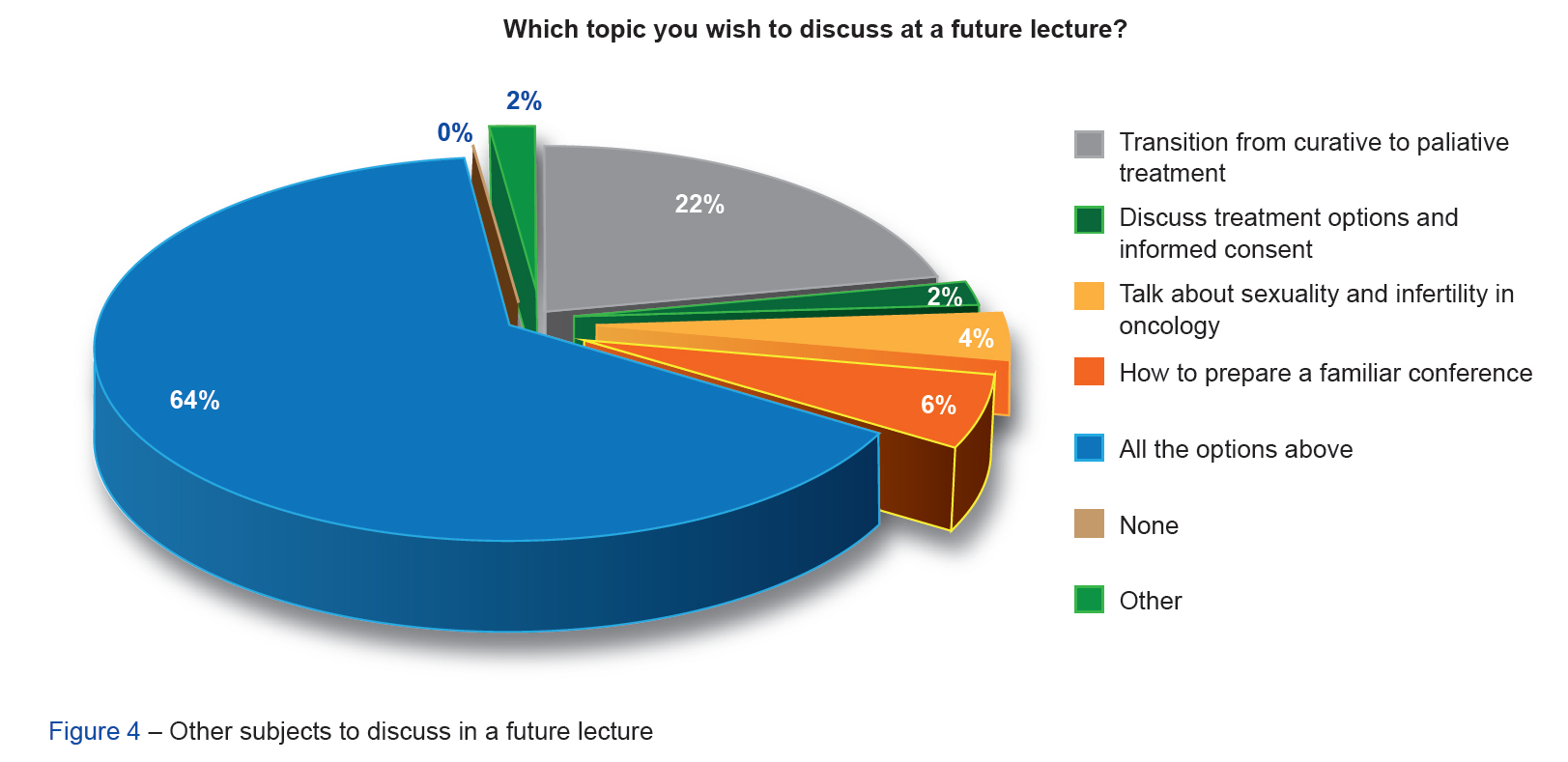SOCIAL MEDIA
Portuguese Medical Association's Scientific Journal

Introduction: Delivering bad news is very common in medical daily practice. Several studies have shown a lack of effective communication skills amongst medical students, particularly concerning how to deliver bad news. The SPIKES protocol allows communicating bad news in a 6-step method. The aim of this study is to investigate the perspective of students related to this subject.
Material and Methods: A 45 minute lecture “Breaking Bad News” was given to 160 students in the fifth and sixth years of the Medicine course, using the SPIKES’ protocol training. After the lecture, an online survey was given to all students, and a cross-sectional and descriptive analysis of data extracted from survey was undertaken.
Results: Fifty-four students (21% of overall) answered the online survey. Eighty three percent said that theme should have an important
role in their further daily medical practice, and most of students rated the physicians’ role as challenging. Sixty percent of students expressed that communicating bad news was an integral part of the medical course curriculum. Regarding the SPIKES´ protocol, 48% felt that the first step would be the easiest to put in practice, and 40% felt that the fifth step related to “Emotions” would be the most difficult.
Discussion: In general, the students would like to gain competencies in breaking bad news using a practical approach.
Conclusions: Students highly valued theoretical and practical approaches in teaching of communication of bad news. Therefore, we
encourage a combination approach in pre-graduate medical education.
Keywords: Clinical Competence; Communication; Education, Medical, Undergraduate; Portugal; Students, Medical; Truth Disclosure
Read the whole article here (english only).